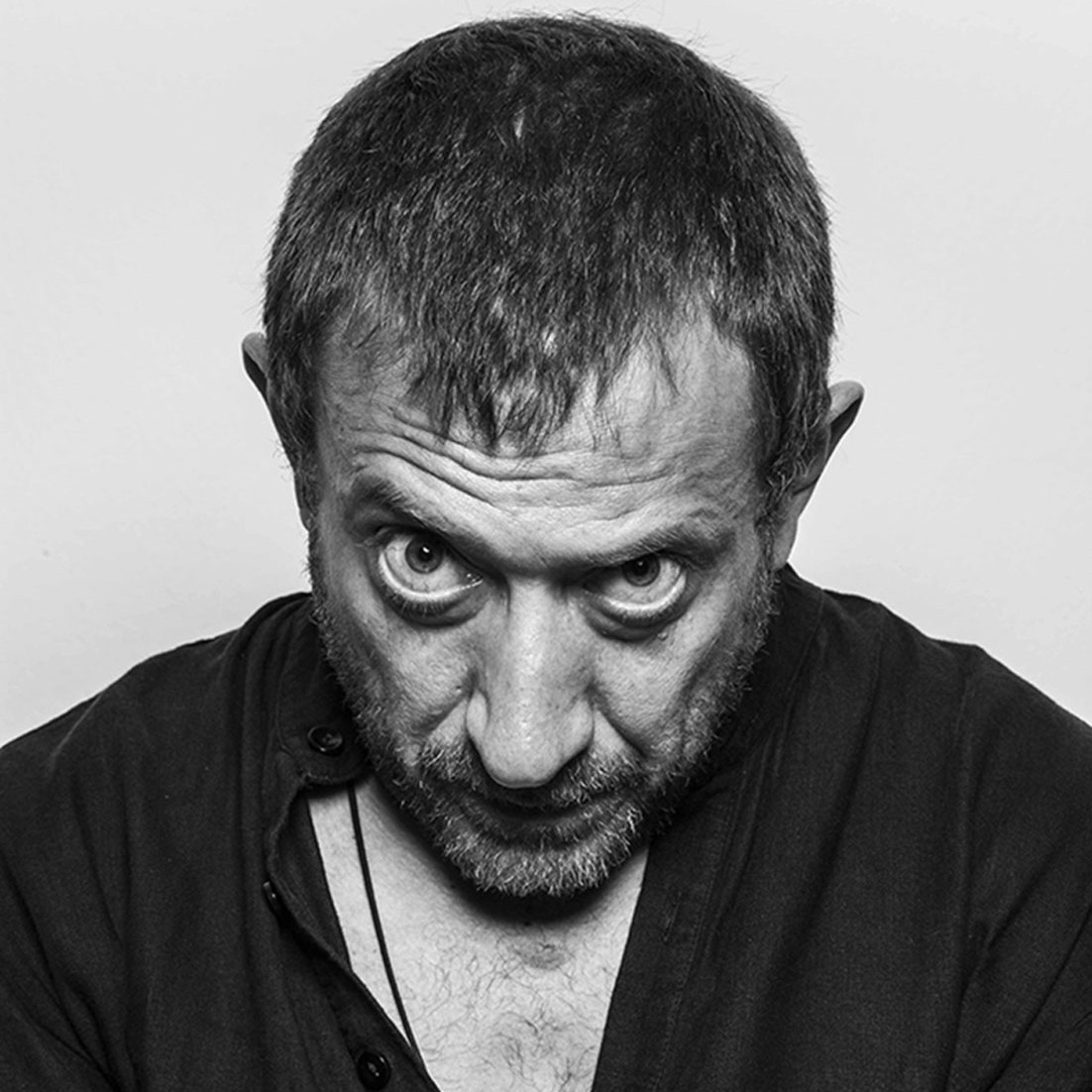Bernard Khoury
The Guts of the Grounds IQD 75

BIOGRAPHY
Born in Beirut (1968). He studied architecture at the Rhode Island school of Design (BFA 1990 / B.Arch 1991) and Harvard University (M.Arch 1993). Khoury first came to public and critical attention with the completion of the B018 music club in 1998, his first built project. This building sparked a string of temporary projects, through which Khoury built a reputation for his ability to produce critical interventions in problematic zones. These include his first six built projects: the BO18 Music Club (Built 1998), the Centrale project (Built 2000) Yabani R2 (Built 2002), the BLC Bank (Built 2004), the Bank of Beirut pavilion in Chtaura (Built 2004), as well as the Black Box (Built 2005). He was awarded by the municipality of Rome, the Borromini Prize honorable mention given to architects under 40 years of age (2001), the Architecture + Award (2004), the CNBC Award (2008) and nominated for several awards including the Aga Khan award (2002 / 2004/ 2021), the Chernikov prize (2010) and the Mies van der Rohe Award (2021). He co-founded the Arab Center for Architecture (2008), was a visiting professor in several universities including the Ecole Polytechnique Fédérale de Lausanne and L’Ecole Spéciale d’Architecture in Paris. He has lectured and exhibited his work in over 150 institutions, including solo shows at the Aedes gallery in Berlin (2003), the Spazio per l’architecttura Milano (2016) and numerous group shows including YOU prison at the Fondazione Sandretto in Torino (2008), the opening show of the MAXXI museum in Roma (2010), the Frac Architecture Biennale in Orleans (2018), the Oris House of Architecture in Zagreb (2020) and the Architecture Biennale of Seoul (2021). He was the architect and co-curator of the Kingdom of Bahrain’s national pavilion at the Venice Architecture Biennale (2014). Over the years he has developed an international reputation and a diverse portfolio of projects in over fifteen countries. Khoury was nominated by the French Ministry of Culture Chevalier des Arts et des Lettres (2020).
The Guts of the Grounds
The first time I broke ground was just over 25 years ago. Impossible not to start from that first work to tackle the theme chosen for this issue of IQD: the Guts of the Grounds. It was about the construction of B018, a music club, a place of nocturnal survival, and its history, full of anecdotes and narratives, starting from its unique genesis, name and location. During the years of Lebanon’s civil war, from 1975 to 1991, musician Naji Gebrane, believing in music as a therapy to alleviate the stress of war, began organizing private parties in his chalet, somehow connected to the number B018. Years after the end of the conflict, in 1998, he decided to build a venue where he could officially hold music therapy sessions. Years after the end of the conflict, in 1998, he decided to build a venue where he could officially hold music therapy sessions. The area chosen for the construction was the so-called Quarantaine, in a deserted neighborhood at the proximity of the port of Beirut, infamous for its macabre aura. The name comes from the fact that, during the French protectorate, it was a quarantine site for arriving crews. Later, it became a refugee camp occupied in 1975 by some 20,000 Palestinian, Kurdish and southern Lebanese refugees, which was completely wiped out by local militiamen in January 1976, soon after the outbreak of civil war. Over twenty years later, in 1998, the scars of those acts were still perceptible in the disparity between the scarce urban fabric of the area and the densely populated neighborhoods located across the highway bordering the zone. Conceived to occupy that site for a period of just five years, B018 is primarily a reaction to both the difficult conditions inherent to the history of the site and the contradiction of building a place of leisure and entertainment on such a site. As an open refusal to participate in the collective naïve amnesia that governed the postwar reconstruction efforts, the club was built underground. The façade is pressed into the ground to avoid the exposure of a mass that could have acted as a rhetorical monument. The structure is embedded in a circular concrete disc slightly above tarmac level and, at rest, is almost invisible. Patrons descend into it via a staircase and find themselves in a dark room that comes to life late at night, when the articulated, heavy metal roof hydraulically retracts, revealing the sky and the cityscape. On the surface, the club is encircled by the concentric concrete and tarmac rings of the access road and parking spots, which the car lights transform into integral elements of the club’s scenario. After a transformation in 2018, B018 finally closed its doors in the spring of 2024, reaffirming the temporary nature for which this architectural intervention was initially intended.